Warum heißt LEGO LEGO?
Aktie
Die überraschende Geschichte hinter dem kultigsten Spielzeugnamen der Welt
Einleitung: Ein Name, der ein Vermächtnis begründete
Hook: LEGO ist eine der bekanntesten Spielzeugmarken der Welt – aber haben Sie sich jemals gefragt, was der Name eigentlich bedeutet?
Kernfrage: Warum heißt LEGO LEGO und woher kommt der Name?
Teaser: Von einer dänischen Redewendung bis zu einem lateinischen Zufall ist der Ursprung des Namens LEGO so clever und kreativ wie die Steine selbst.
1. Alles beginnt in Dänemark: „ Leg Godt “
Im Jahr 1934 wollte LEGO-Gründer Ole Kirk Kristiansen einen Namen, der seine Werte widerspiegelte.
Er veranstaltete einen Namenswettbewerb unter seinen Mitarbeitern und suchte nach einem Wort, das die Philosophie des Unternehmens verkörperte.
Die Gewinneridee? Ein Name, den er sich selbst ausgedacht hat: LEGO , abgeleitet von der dänischen Phrase „leg godt“ , was „spiel gut“ bedeutet.
Es war kurz, einprägsam und brachte alles zum Ausdruck, was Ole mit seinem Unternehmen erreichen wollte.
2. Die Philosophie hinter dem Namen
„ Spiel gut “ war nicht nur ein Motto – es war eine Mission.
Durch die Wahl eines Namens, der die Spielqualität in den Mittelpunkt stellte, legte Ole den Grundstein für eine Marke, die folgendes in den Vordergrund stellte:
-
Kreativität statt Massenproduktion
-
Sinnvolles Spiel , das Lernen und Vorstellungskraft fördert
-
Eine nachhaltige, positive Wirkung auf die Entwicklung von Kindern
Diese Vision ist seither ein zentraler Bestandteil der Identität von LEGO.
3. Ein überraschender lateinischer Zufall
Und hier ist der Clou: Ole wusste es damals noch nicht, aber „LEGO“ gibt es auch auf Latein – und es bedeutet:
-
„ Ich habe zusammengestellt “
-
„ Ich versammle “
-
„ Ich sammle “
Das war ein reiner Zufall , aber ein unglaublicher – vor allem wenn man bedenkt, dass LEGO Jahrzehnte später die Spielzeugindustrie mit ineinandergreifenden Plastiksteinen revolutionieren sollte.
In gewisser Weise sagte der Name die Zukunft der Marke voraus – bis hin dazu, wie Kinder (und Erwachsene) Steine zusammenstecken würden, um ganze Welten zu erschaffen.
4. Andere in Betracht gezogene Namen
Bevor er sich für LEGO entschied, dachte Ole Kirk Kristiansen auch über den Namen LEGIO nach – lateinisch für „Legionen“.
Doch am Ende wirkte LEGO einfacher , verspielter und spiegelte die Kernwerte des Unternehmens besser wider: Vorstellungskraft, Kreativität und hochwertiges Spielen.
5. Der Name wird offiziell
Im Jahr 1936 wurde LEGO offiziell als Firmenname übernommen.
Mehr als zwei Jahrzehnte später, im Jahr 1958 , ließ die LEGO Gruppe das heute berühmte Steckbausteinsystem patentieren – eine Innovation, die perfekt zur dänischen und lateinischen Bedeutung von „LEGO“ passte.
Ein Name, der ursprünglich gewählt wurde, um gutes Spielen zu fördern, ist über Generationen hinweg zum Synonym für Bauen , Ingenieurwesen und kreatives Geschichtenerzählen geworden.
Übersichtstabelle: Warum LEGO LEGO heißt
| Aspekt | Erläuterung |
|---|---|
| Herkunft | Aus dem Dänischen „leg godt“ = „spiel gut“ |
| Erstellt von | Ole Kirk Kristiansen, LEGO-Gründer |
| Jahr der Adoption | 1936 |
| Lateinische Bedeutung | „Ich baue zusammen“, „Ich füge zusammen“ (zufällig) |
| Alternative in Betracht gezogen | LEGIO (lateinisch für „Legionen“), aber nicht ausgewählt |
Fazit: Ein Name, der ein globales Phänomen hervorbrachte
LEGO ist nicht nur ein Name – es ist eine Philosophie. Das Wort LEGO wurzelt in der Idee, gut zu spielen , und ist durch einen glücklichen Zufall mit dem Konzept des Zusammenbauens und Gestaltens verknüpft. So ist es weltweit zu einem Symbol für Fantasie, Handwerkskunst und zeitlosen Spaß geworden.
Denken Sie also das nächste Mal daran, wenn Sie eine Schachtel mit Bausteinen öffnen:
Du spielst nicht nur.
Sie führen ein Erbe fort – Stein für Stein.
🧱 Bonus-Tipp für Sammler und Display-Enthusiasten:
Wenn Sie nach einer stilvollen Möglichkeit suchen, Ihre LEGO-Bauten zu schützen und zu präsentieren , schauen Sie sich Brick Zone Hub an. Wir bieten hochwertige, staubdichte LEGO-Vitrinen aus Acryl für Sammler, denen Form und Funktion gleichermaßen wichtig sind. Lassen Sie Ihre Steine glänzen – schön und sicher.
